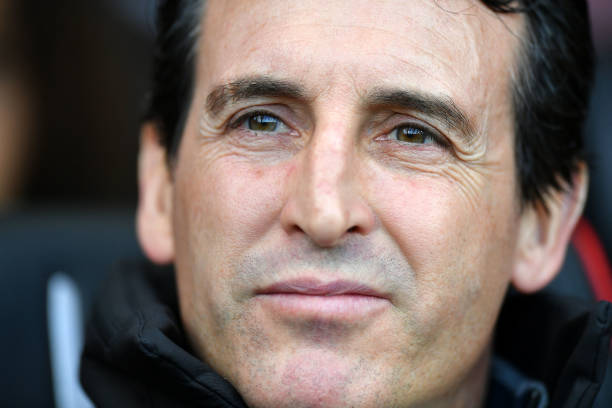Following on from a cobbled together team succumbing at Southampton (as per the annual tradition) and a hard fought victory over a particularly unpleasant Burnley team, the growing feeling that the Arsenal squad was running out of momentum was proven against Brighton and Liverpool.
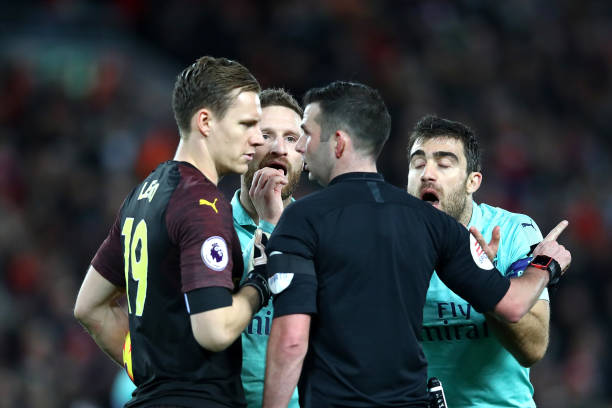
The cracks have been visible for anyone who cares to look for most of this season, and as injuries have kicked in and the fixtures have piled up, they have widened to the levels on show during the last year of Arsene Wenger’s reign.
For the first 3 months of this season, the lack of high-end quality and recent incoherent squad building was largely covered for by expending more energy than our opponents and the impact of a manager with a penchant for tactical substitutions more nuanced than the Alamo.
However, the fact that the first 20 league games of the Emery era have only yielded one half-time lead, always made the giddy 22-match unbeaten run seem like one more likely to end imminently than continue into the distance.
As the weekly energy levels have inevitably dropped off, the fault lines have widened as much as the gaps in the defence, and have given clear indication of how much work the new head coach and supporting set-up have to do in order to return this club to the previously maligned status of Champions League regulars.
We now have our worst defensive record of any season at this point in the Premier League era. 28 goals conceded in 20 games.
Of course, our defensive record has fallen off a cliff since Bellerin, Holding and Monreal all picked up injuries, but the nature of the goals conceded suggested that personnel issues are being compounded by ongoing systemic ones.
Equally, going forward we alternate between looking swift, penetrative and efficient and reverting back to the worst elements of latter-day Wengerball, with sideways passing and wastefulness the order of the day.
In both cases, it is clear that the manager’s pursuit of tactical flexibility has been magnified by not finding a system that allows this squad and his broader philosophy to successfully co-exist.
There have been encouraging signs when all personnel have been fit and firing, but even so, this has not been characterised by a consistency of selection, system or performance.
What has become clear, and was probably inevitable, is that not all of Wenger’s departing squad will fit into whatever Emeryball turns out to be, much as, frankly, it didn’t really suit Wengerball by the end.
With this in mind, and with half the season gone, let’s have a look at where things stand.
2The Engine Room

In midfield, the ‘hits and misses’ are harder to judge purely on performance, for exactly the reasons many of us identified a year ago. We have a collection of very good but not top drawer midfielders, the best of whom cannot simultaneously fit into any cohesive system.
Despite his immediate position of fan favourite (and long overdue provision of tactical balance) Lucas Torreira‘s powers do not extend to making an endless collection of number 4s, 8s and 10s fit together in a successful formation.
As for the pocket Uruguayan himself, his combativeness, passing from deep and mobility in tight areas have not only helped the team make the most of tight games, but have also allowed Granit Xhaka to flourish as the deep-lying playmaker he is.
However, despite the redeployment of the Vieira song, he is not a world class box-to-box colossus, and, at 22, still has things to learn positionally and in terms of tracking runners. Unsurprisingly, with the winter fixture pile-up, the key midfield man is showing the effects of fatigue associated with many a first season in England. There can be no doubt that his signing has been a success and that the future for him looks bright, but he isn’t quite that fix-all that he was being pronounced as.
As mentioned, alongside him Granit Xhaka has finally been given the support to cover his weaknesses a little and allow him to focus on his strengths. Accordingly, the new Swiss captain is having his best season at the club to date, and his enforced moves to fill in as part of the defence have done as much to destabilise the midfield as they have the backline. These two have undoubtedly cemented their roles as a first choice pairing in that double pivot role.
Another bright spot has undoubtedly been Matteo Guendouzi, the largely unheard of off-season punt. While nominally occupying the same position, his role remains far less defined than that of Torreira or Xhaka. He offers neither the ability to break up play of the former nor the game control of the latter, but at this stage is an intriguing multifunction midfielder with a fine passing range, good energy and strong competitive streak. He has clearly shown himself far more ready to contribute than could have been anticipated but has the potential to yet bring much more to the table in the future.
Despite recent selections, it’s hard to think they work as a trio against defensive opponents, but all three have credit in the bank and their spots under the new manager assured.
From here on the waters get a lot muddier in midfield.
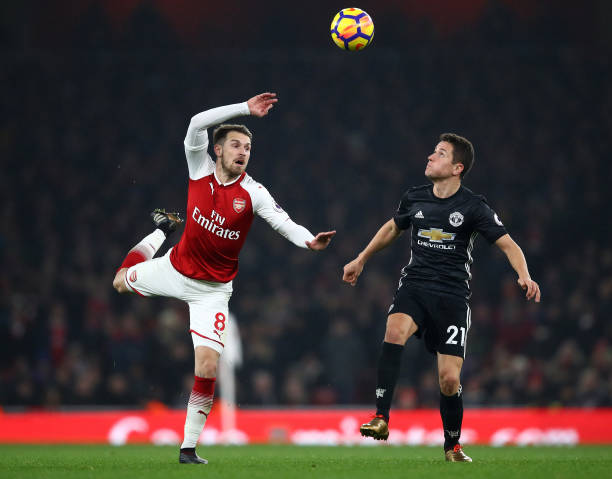
It’s probably wise to avoid digging up the Aaron Ramsey contract situation any more than necessary, but there is no doubt that it has cast a shadow over the player’s involvement and the club as a whole. For a player who is known to be professional, committed and responsible to effectively be shown the door and used so sparingly is hard to understand – especially given the calibre of teams rumoured to be chasing his signature for the 2019/20 season.
That said, there has been so much smoke about his agent for so long, it appears there has been some fire there, and the fact remains that despite his productivity when fit last season, it really isn’t clear where he fits into a team alongside the other top men in this squad.
He’s looked good this season in game-impacting cameos, but less convincing when starting, and it is hard to justify meeting his reported wage demands if he isn’t nailed on first-choice. However, for the club to cut off all contract discussions having refused to sell him in the summer seems to be disastrous both in terms of PR and asset management. It will be justified if he helps us to a top-four spot before departing, but otherwise, the club once again will look chaotic and foolish at a strategic level.
Part of what has likely hastened Ramsey’s impending exit is the king’s ransom of Mesut Ozil‘s January contract renewal. Ultimately, the two players are most effective in the same position, and an on-form Mesut Ozil has a greater positive impact than an on-form Aaron Ramsey. The problem is that an on-form Ozil has been more fleeting than ever this season.
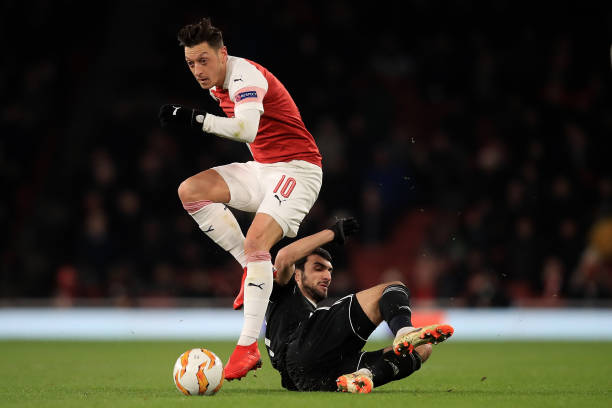
With a negative impact from the horrible end to his international career pretty much inevitable, the German’s season to date had also been interrupted by niggling injuries and struggles adapting to a manager less willing to take his rough with his smooth. Combined with this the fact that Emery has experimented with tactical options which don’t suit Ozil and that there is clearly some of clash of either personality, footballing ideologies or status, and it’s been a season more stop than start for our number 10.
However, despite all the press death-nells, it would not be a huge surprise to see things turn around for him. With his wages significantly limiting potential suitors, the impending departure of Ramsey, and the difficulty the club has had creating chances in his absence, the manager is duty bound to see how Arsenal can flourish with their highest profile asset. The question is this: Can Emery find a system that takes advantage of his undoubted gifts without sacrificing the team’s overall effectiveness?
Closely related to this question is the hit and miss Henrikh Mkhitaryan.

Not quite a number 10 and not quite a right-sided player, he does, theoretically at least, seem a better fit for Emery’s love of positionally flexible creative inside forwards. The problem is both his effectiveness and his involvement in play can vary hugely, making it hard to call him more than a rotational player. He’s not the player who left Manchester United looking broken, but equally, the halcyon days of his best form at Borussia Dortmund also seem behind him. At present, his place in the squad seems safe, but it’s hard to see him at the club after 2020.
Not a million miles away in terms of type we have Alex Iwobi.
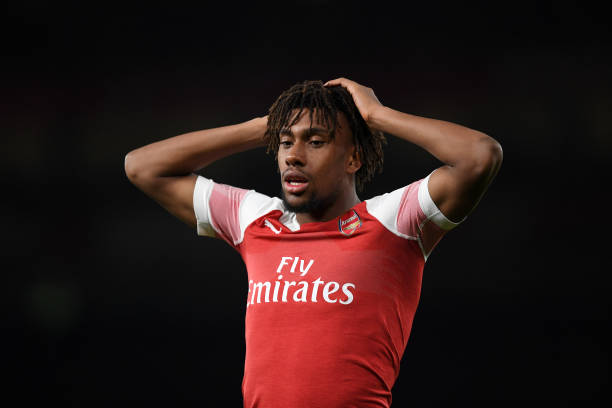
His profile, as a young, physically strong, home-grown ball carrier, is a good fit for both this squad and Unai Emery’s tactical preferences, but there are entirely reasonable questions about whether he can cut it at this level.
A very promising early season run in the team ran out of steam as Arsenal struggled for both a clear tactical identity and with injuries that have upset team balance. He seldom hides as a player and remains an intriguing prospect, but it’s hard to say Arsenal shouldn’t expect more from a regular player in his position. Long-term, his position as a squad member seems assured and the manager seems to like him, but he’s not ready to take ownership of a position at the club, and won’t be until both his decision making and positioning improve.
Making up the numbers in midfield we have very different players in very different positions within the squad. It’s clear that the manager doesn’t rate or fancy Elneny and at this stage it’s hard to see that perennial 6/10 Egyptian at the club next season. When your game time is almost as limited as Carl Jenkinson, you know your goose is cooked.
Ainsley Maitland-Niles‘ athleticism is clearly appreciated by the manager, but following his fluke opening day injury, he has yet to line up in his best position. That said, his flexibility will undoubtedly get him more games than if he were reliant on unseating the Torreira-Xhaka axis.
Emile Smith Rowe‘s rapid development continued until his recent minor injury, but for all his huge potential, he is still physically a fair way off Premier League ready. Uncertainty and injuries elsewhere may provide more opportunities for Joe Willock who has been impressive in cup cameos and has been on the bench in recent games (I wonder how Chris feels having left his brother at his boyhood club when he’s not got much of a look in at Benfica and Arsenal are desperate for wingers).
The other name worth a mention is, of course, Reiss Nelson, whose brilliant start at Hoffenheim has come back to earth. As a hybrid winger/creative inside-forward, he’s an Emery style player in a squad with precious little depth on the wing.

